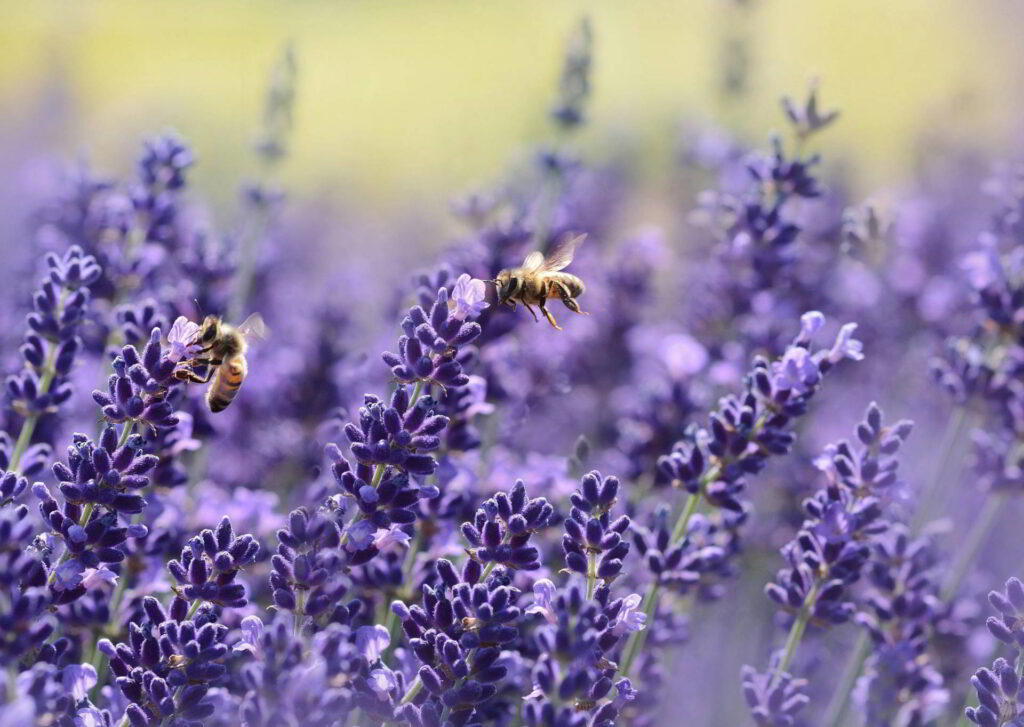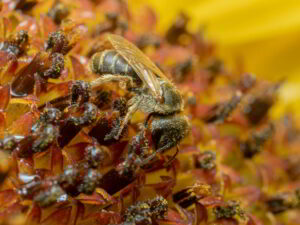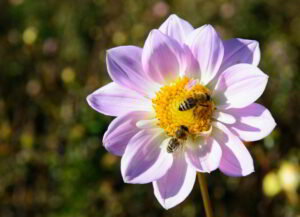Spring Preparation Basics
Spring is a critical time for beekeepers as the bees emerge from their winter huddle. Preparing appropriately can make all the difference in maintaining a healthy, thriving apiary.
Identifying Hive Needs
As temperatures rise above 40-50 degrees Fahrenheit, bees start to break cluster and become more active (The Seed That Sprouted). This period is crucial for ensuring their needs are met.
Food Requirements
Bees will begin consuming more food as they increase activity. Monitor the hive for adequate reserves of honey and pollen. If reserves are low, it’s time to provide supplemental feeding. Consider using a sugar syrup mix or protein supplements to support their needs.
| Hive | Food Reserves (lbs) | Supplemental Feed Needed |
|---|---|---|
| Hive 1 | 20 | No |
| Hive 2 | 10 | Yes |
| Hive 3 | 5 | Yes |
For more on managing food requirements, check our spring beekeeping management guide.
Equipment Checks
Inspect your hives for any winter damage that may have occurred. Ensure the hive boxes are structurally sound and look for cracks or warping. Replace any damaged components to avoid unnecessary stress on your bees.
Objective:
- Inspect hive box integrity
- Replace damaged parts
Ensuring Beekeeper Equipment
Before the busy bee season starts, it’s essential to have all equipment ready and in good working order. This includes protective gear, hive tools, and feeders.
Protective Gear
Ensure your beekeeping suit, gloves, and veil are in good condition. Repair any tears or leaks to avoid bee stings. An inspection of your protective gear will help ensure you have a safe beekeeping season.
Checklist:
- Check for tears in the suit
- Inspect gloves and veil
Hive Tools and Feeders
Clean and sanitize hive tools and feeders. Dirty or contaminated equipment can spread diseases within the colony. Make sure you have extra feeders on hand for supplemental feeding during nutritional shortages.
For a more detailed equipment checklist, refer to our spring beekeeping tips.
Preparing for Hive Inspections
Plan your first spring inspection. Early inspections are essential to ensure the colony’s health and to identify any weak hives that may require support.
References from Penn State Extension highlight that late winter and early spring are crucial periods when honey bee queens resume egg-laying and colony brood rearing begins.
By addressing hive needs and ensuring the right equipment is available, beekeepers set a strong foundation for a productive spring season. For more spring beekeeping techniques, explore our related articles.
Nutrition and Pollen Sources
Spring is a critical time for beekeepers, especially those prepping their hives for the active season. Ensuring that bees have adequate nutrition and access to pollen is essential for maintaining colony health.
Monitoring Bee Food Requirements
As temperatures rise above 40-50 degrees Fahrenheit, bees in Zone 7b start to break cluster and become more active (The Seed That Sprouted). At this time, it is crucial to monitor their food needs closely. Here’s a quick checklist to help:
- Check Honey Stores: Inspect the hives to ensure that there is enough honey left from the winter. A lack of honey can lead to starvation.
- Supplement Feeding: If honey stores are low, consider supplementing with sugar syrup. A common ratio is 1:1 sugar to water in the early spring.
| Hive Condition | Action Required |
|---|---|
| Ample Honey Stores | Monitor regularly |
| Low Honey Stores | Supplement with sugar syrup |
For more tips on how to manage food resources, you can refer to our detailed guide on spring beekeeping management.
Providing Additional Pollen Sources
Pollen is a vital source of protein for bees, crucial for brood rearing and overall hive health. During early spring, beekeepers might need to provide additional pollen sources, especially if natural blooms are delayed.
Consider the following to ensure bees have sufficient pollen:
- Pollen Patties: These are commercially available and can be placed directly inside the hive.
- Natural Pollen Sources: Encourage the growth of early-blooming plants and trees in your area. This can provide a more sustainable and continuous pollen source.
| Method | Description |
|---|---|
| Pollen Patties | Fast and easy solution |
| Early Bloom Plants | Sustainable long-term solution |
Done correctly, these measures can significantly improve the vitality of your bees. For more comprehensive advice, check out our resources on spring beekeeping practices and spring beekeeping techniques.
By closely monitoring food requirements and providing additional pollen, beekeepers can ensure their colonies are strong and ready for the busy spring season.
Hive Maintenance and Inspection
To ensure a thriving colony come spring, thorough hive maintenance and inspection are crucial. Here are essential tasks to ready your hives for the active season.
Painting Hives
Painting hives is an important task for both new and experienced beekeepers. This step helps protect the wood from the elements, extending the lifespan of your equipment.
- Choose the Right Paint: Use exterior latex paint that is durable and non-toxic to bees.
- Color Selection: Opt for light colors like white or pastel shades to prevent overheating in warm temperatures.
- Timing: Paint your hives well before bees arrive to ensure the paint is fully cured.
Painting helps in visually distinguishing hives, aiding bees in locating their specific hive. Always ensure to paint the exterior only, leaving the interior untreated to avoid any chemical exposure to your bees. Find more spring beekeeping techniques here.
Checking Hive Condition
A detailed inspection of your hive after winter is necessary to evaluate and address any issues.
- Remove Winter Protections: Take off mouse guards and any insulation used during winter.
- Check for Damage: Inspect for cracks, broken frames, or any water damage.
- Clean the Hive: Remove any debris, old combs, and dead bees to reduce the risk of disease.
- Ensure Adequate Feed: Verify the bees have enough honey or supplement their diet with pollen patties if necessary.
| Inspection Task | Recommended Action |
|---|---|
| Remove Winter Protections | Take off mouse guards |
| Check for Damage | Repair cracks and broken frames |
| Clean the Hive | Remove debris and old combs |
| Feed the Bees | Supplement if honey is low |
Regular monitoring and maintenance help ensure a strong and healthy colony. Keep track of your findings and create a detailed log to refer back to as the season progresses. For more spring beekeeping tips, visit our dedicated section.
Pest Control and Mite Management
Managing pests and mites is crucial in preparing your hives for the increased activity of the spring season. This part of the spring beekeeping checklist focuses on preventive mite treatments and monitoring Varroa mites.
Preventive Mite Treatment
Preventive mite treatment is essential, even when infestation levels are unknown. Mites can adversely affect honey production and overall hive health. It’s advised to rotate treatments in spring and fall or year to year to prevent the development of resistance in mites to the treatments (NOD Global).
| Season | Treatment Type | Purpose |
|---|---|---|
| Spring | Oxalic Acid | Effective against Varroa mites |
| Fall | Formic Acid | Mitigate mite resistance |
Rotating treatments ensures that mites do not build resistance, maintaining a healthy and productive hive. More tips on effective treatments can be found at spring beekeeping techniques.
Monitoring Varroa Mites
Regular monitoring of Varroa mites is critical to ensuring the health of the colony. Varroa mites are notorious for spreading diseases within hives, and effective monitoring can prevent a major infestation.
One effective method involves performing an alcohol wash. This technique helps to determine the number of mites present in the hive by shaking bees in an alcohol solution and counting the dislodged mites (NOD Global).
| Spring Activity | Purpose | Recommended Tool |
|---|---|---|
| Alcohol Wash | Monitor mite population | Mason Jar, Alcohol Solution |
| Sugar Roll | Alternative monitoring method | Powered Sugar, Jar with Mesh Lid |
By closely monitoring and managing mite levels, beekeepers can ensure the health and productivity of their colonies throughout the active season. Further insights into techniques can be accessed on our page about spring beekeeping practices.
Colony Health Assessment
Assessing the health of your bee colony is a critical step in preparing for the active spring season. Two essential tasks in this process are checking for queenright colonies and performing drone fecundity tests.
Checking Queenright Colonies
In early to mid-spring, beekeepers should verify the presence of a viable queen in each colony. This process involves checking for queenright colonies, which means the hive has a healthy, egg-laying queen. Observing eggs within the brood chamber indicates the presence of a queen and suggests that the colony is healthy and well-organized.
Steps for Checking Queenright Colonies:
- Open the hive and locate the brood chamber.
- Look for eggs, which are typically laid in a single row within each cell.
- Identify any newly-hatched larvae to confirm active egg-laying.
Signs of a Queenright Colony:
- Presence of eggs and larvae.
- Workers attending the queen.
- Propolis patterns indicating healthy hive activity.
Consult our spring beekeeping management guide for detailed steps and tips on ensuring your colonies are queenright.
Performing Drone Fecundity Tests
Drone fecundity tests are crucial for ensuring the reproductive viability of your drones, especially in mid to late spring. Fertile drones are essential for successful queen mating processes. These tests involve examining the drones to confirm their fertility, which is indicated by the color and condition of the horn-like cornua of the evaginated endophallus (NOD Global).
Steps for Performing Drone Fecundity Tests:
- Gently capture a few drones from the colony.
- Evaginate the endophallus to examine the cornua.
- Observe the color and structure to determine fertility.
Fertility Indicators:
- Healthy cornua should be light in color and free of abnormalities.
- Consistent structure without deformities.
By maintaining a routine of these health assessments, beekeepers can ensure their hives are prepared for the busy spring season. For more detailed information and additional practices, refer to our articles on spring beekeeping tips and spring beekeeping practices.
Advanced Beekeeping Practices
For beekeepers preparing their hives for increased activity in spring, incorporating advanced techniques can significantly boost efficiency and colony health. Two of the most effective methods include implementing smart hive technology and leveraging data-driven beekeeping.
Implementing Smart Hive Technology
Embracing Smart Hive Technology allows beekeepers to receive real-time data on various hive conditions such as temperature, humidity, weight, and bee activity levels (Modern Beekeeper). This enables early detection of potential issues like swarming, pest infestations, or food shortages, ensuring timely interventions.
Benefits of Smart Hive Technology:
- Real-time Monitoring: Consistent updates on hive conditions.
- Early Issue Detection: Spotting problems before they escalate.
- Efficient Data Collection: Streamlining the process of monitoring hive health.
Check out our page on spring beekeeping practices for more insights on how to integrate smart technology into your beekeeping routine.
Leveraging Data-Driven Beekeeping
Data-driven beekeeping involves using apps and software platforms to analyze trends in hive behavior, track honey production, and predict seasonal challenges. By logging observations digitally, beekeepers can refine their approaches to feeding, pest control, and hive placement (Modern Beekeeper).
Advantages of Data-Driven Beekeeping:
- Behavioral Insights: Understanding hive trends and patterns.
- Predictive Analytics: Anticipating seasonal challenges.
- Enhanced Strategy: Refining techniques for better results.
Innovative Data Collection:
Utilizing QR codes adhered to bees is an innovative method that allows researchers to collect data on hive health, foraging patterns, and the impact of environmental changes on bee behavior (Popular Science). This method helps in better understanding and tracking bee populations, aiding in combating issues like Colony Collapse Disorder.
| Technique | Benefits |
|---|---|
| Smart Hive Technology | Real-time data, Early detection of issues, Efficient monitoring |
| Data-Driven Beekeeping | Behavioral insights, Predictive analytics, Enhanced strategy |
By combining these advanced beekeeping practices, beekeepers can significantly improve the health and productivity of their hives. For further reading, explore our articles on spring beekeeping management and spring beekeeping techniques.




